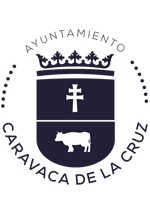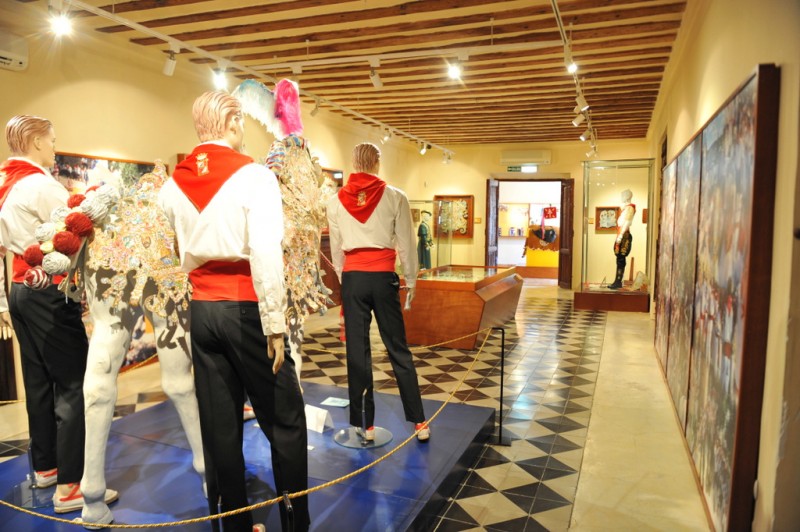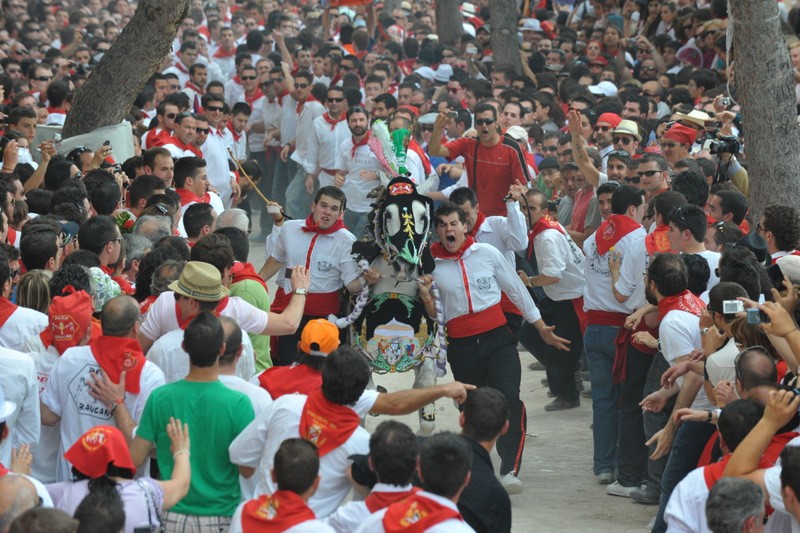Contact Caravaca Tourist Office +34 968 70 24 24
or send an Email
Click Here



















Contact Caravaca Tourist Office +34 968 70 24 24
or send an Email
Click Here
This site uses cookies. By continuing to browse the site, you are agreeing to our use of cookies. Read More (privacy and cookie policy)



Celebrating the events of the Fiestas de la Santísima y Vera Cruz and Moors and Christians
This museum is dedicated to the Fiestas de la Santísima y Vera Cruz which take place at the beginning of May every year, offering visitors a snapshot into the events of this special week.
Several celebrations are rolled into one; the Moors and Christians, with parades and mock battles, the bathing of the true cross and theatrical representations of historic acts, combined with the celebrations of the Wine Horses (Los Caballos del Vino). This is the centrepiece of the fiestas, in which horses dressed in extravagantly embroidered mantles thunder up to the castle, recreating the historical moment when the Knights Templar brought liquid up to the parched occupants of the castle who were besieged by Moorish forces, all interwoven around the story of the Cross of caravaca, the Vera Cruz.
The fiestas are of particular significance to Caravaca de la Cruz as it is this tiny piece of the "lignum crucis", the true cross, gifted to the city by the Pope, which gives it the status of Holy City, one of only 5 in the world.
The fiestas are a week of colour, extravagant costumes, emotion, symbolic acts, light and festivities which are unique in Spain and are visited by tens of thousands of people every year.
Following the sequence of the museum, which starts with an audiovisual presentation, visitors can see each of the elements of these remarkable fiestas, along with some of the clothing worn and examples of the mantels worn by the wine horses, as well as many other objects relating to these festivities.

The beginning of the fiestas is announced by El Tio de la Pita, a series of processions which take place throughout the five days leading up to the fiestas and which feature Gigantes y Cabezudos, enormous papier mache figures who parade through the streets to the accompaniment of music played on a dulzainero, a type of musical instrument similar to a clarinet, and drums.
The night before the fiesta begins, a traditional gathering of families and friends is celebrated by the consumption of Migas. This is a traditional dish which served as a basis for the staple rural diet of those working in the agricultural sector as it could be easily cooked over an open fire in the days when few homes possessed any type of oven, and is a calorific combination of flour and olive oil served with fried meat or fish. At these celebrations it is cooked in an enormous frying pan over an open fire, and this is a night of song and celebration, traditional music and good local wine to fortify the population in preparation for the week ahead.

1st May
On the morning of the 1st the ringing of the church bells announces the beginning of the Fiestas. These bells are rung only four times every year, calling the faithful to open air Mass within the sanctuary.
At 11.00 the participants congregate in the Glorieta, parading up to the Santuario for a special service in which floral offerings are made to the patron and new members of the Cofradía de la Vera Cruz (the brotherhood of the True Cross) are awarded a replica cross.
In the afternoon there is a competition among the riders of the horses in which control and riding skills are given prizes, and there are others for the best horses. This is followed by an evening of satirical musical entertainment, a throwback to the jongleurs, the wandering troubadours of Mediaeval Europe, celebrating wit and merryment.
From 18.00 in the Iglesia de la Compañía de Jesus the embroidered coats of the horses are displayed for those who wish to visit and see them close-up.

2nd May
On this day the Wine Horses recreate the legend in which the Knights Templar braved the Moorish armies besieging the castle to bring wine up the hill to the thirsty inhabitants who were barricaded within.
During the morning the horses parade, showing off their exquisitely worked shawls, before travelling up to the sanctuary to compete in the Race of the Wine Horses.
The legend dates back to the days of the Knights Templar, who answered the pleas for help of the townspeople, besieged by the Moorish armies. The invaders had contaminated the water supply and those inside the protection of the castle walls were dying of thirst.
Desperately seeking water, they were only able to locate wine, which was tied to the backs of the horses and the brave Knights ran up the hill before the Moorish armies realised what was happening. The Vera Cruz was bathed in the wine, blessing it before consumption, and miraculously the sick and wounded were healed, the weak restored and the battle could continue against the Moors.
60 horses are dressed in spectacular embroidered mantels, the fruit of a year's work by dedicated members of each "peña" (of fiesta group), and they run up the hill to the sanctuary one by one in a race against the clock.
It can be incredibly dangerous, espeically on wet days, as hooves skid and horses crash into the watching crowds. Thousands of people pack the route up to the castle as the crowds part, allowing passage to the thundering hooves of the animals and their runners, magnificent mantels glinting in the sunlight and the crowds screaming their support.
Prizes are awarded for both the fastest horses and those with the most exceptional embroidery, and it really is an incredible honour to win either competition.
These mantels cost thousands of euros to make, the cost of which is borne by the peña members themselves.
On this same day there is a moving ceremony in which the wine and flowers are blessed, before the Vera Cruz is taken down by the Moors and Christians to the Church of El Salvador where it remains until the end of the fiestas.

3rd May, the day of the Santísima y Vera Cruz.
At 17.45 the solemn "Procesión del Baño" takes place, in which the Vera Cruz is taken to the Capilla del Baño, accompanied by the Moors and Christians. Upon arrival, there is a spot of parleying between the Christian King and the Moorish sultan, followed by a mock battle.
At 21.00 the procession continues to the Templete, where the cross is bathed in the waters of the fountain, a symbolic act which blesses the orchards and crops of Caravaca and brings fruitfulness and health to the countryside surrounding the town. At this moment, symbolically at least, the waters of the town and the cross become one.
4th May
9.00: The "Cruz de Impedidos" takes place, in which the Cross travels from the Ermita de Santa Elena to the Monasterio de Santa Clara, where it is received in a traditional ceremony in which thousands of rose petals are strewn from the gallery of the monastery, bathing it in symbolic floral offerings.
The Cross then continues its journey to the sick, with Mass celebrated en-route, ending in the Parroquia de la Purísima Concepción.
In the evening, the grand parade of the Moors and Christians takes place, a spectacular display of robes and costumes with thousands of participants.
5th May
The Cross continues on its route around the churches and monsasteries of Caravaca, finally returning to the Santuario at 18.00.

The museum is at Calle de las Monjas, 19
This is an easy musuem for a first stop-off point on a visit to Caravaca de la Cruz as it is close to the best parking spot for those planning a visit to the City, which is alongside the large celebraciones castillo restaurant. (click for parking advice in Caravaca de la Cruz)
The Museo de la Fiesta is also opposite the Tourist Information Office, which is the best place to pick up a map and continue on into the old quarter of the city.
The museum is on three levels, but there is a lift, so access is fine for those in a wheelchair.

Opening hours
Telephone 968 702424.
Museum opening hours during the 2024 Holy Year:
Weekdays 10.00 to 14.00 and 16.30 to 19.30
Saturdays 10.30 to 14.00 and 16.30 to 19.30
Sundays 10.30 to 14.00
Entrance fee
Standard entry 3 euros
Under 14s and pensioners 2 euros
For more information about visiting Caravaca de la Cruz visit Caravaca Today.
